Patent Searching – Overview
Share:
 A patent search typically deals with search/ research/ data mining which involve patents in one way or the other, either directly or indirectly. Contrary to a myth, patent searchers don’t just involve searching patents, but also comprise scouting of non-patent and legal literature searches which are linked to certain patent oriented projects.
A patent search typically deals with search/ research/ data mining which involve patents in one way or the other, either directly or indirectly. Contrary to a myth, patent searchers don’t just involve searching patents, but also comprise scouting of non-patent and legal literature searches which are linked to certain patent oriented projects.
Patent searching is a key tool for organizations across the globe, which is now increasingly sensitive to innovation as a parameter to success and growth. To keep an upper edge, an organization evolves its road map on multiple factors where patent searching is used as a strategic tool to provide strategic inputs, thereby making patent searching itself as one end of the strategy.
Let us take an example of an electronics innovation driven company EXTC-I who want to expand their business in wireless internet modems
- The IP team will first search and analyze patent and non-patent data in the field of wireless internet modems published in the last 7 years and come out with a report to help the R&D team get a direction
- The same report can be given to the business strategy makers, providing them with information on other active patent filers in wireless internet modems. They may use this information to map out competitors or look at mergers, acquisition, or licensing as an option in that field
- The R&D team will then conduct internal exercises and list down a set of inventions that will be feasible and relevant to the company’s strategy. Then they provide the list to the IP team, who will perform searches to identify whether the proposed inventions are new and inventive and have the merit for a patent registration
- The IP team will further verify whether the company’s inventions are infringing any other live or granted patent to ensure no legal matters will create barriers for the invention
- At the time of drafting patents, identifying other patents and disclosing technologies shall be useful in drawing out unique features of the company’s invention to draft a strong patent application
- The IP team will also report to the R&D and strategy team constantly of ongoing patents being published from time to time for all of the above inputs
- The company may also choose to invalidate or oppose a competitor’s patent or patent application to gain a strategic advantage in the business for which again the IP team will conduct patent and non-patent searches keeping the patent invalidated as a reference
- The company shall carry out patent searches to audit or valuate their patent portfolio at a later stage of a patent lifecycle
We can observe through above examples that patent searches provide strategic inputs on multiple fronts and enable different decisions in an organization. It should be noted however, that other than the above mentioned examples, many other case by case situational decisions can be empowered by a relevant patent search and this extends to not just companies but academic institutions, students, Government agencies and individual inventors.
The Art of Patent Searching
We have touched on the significance of patent searching in above paragraphs. Now, we shall discuss why patent searching is a skill and art in itself which requires continuous practice, creativity, and a holistic approach. A good search is a combination of exhaustive search and extensive search wherein a combination of good search strategy used on a good and relevant database.
Exhaustive Searches and Search optimization:
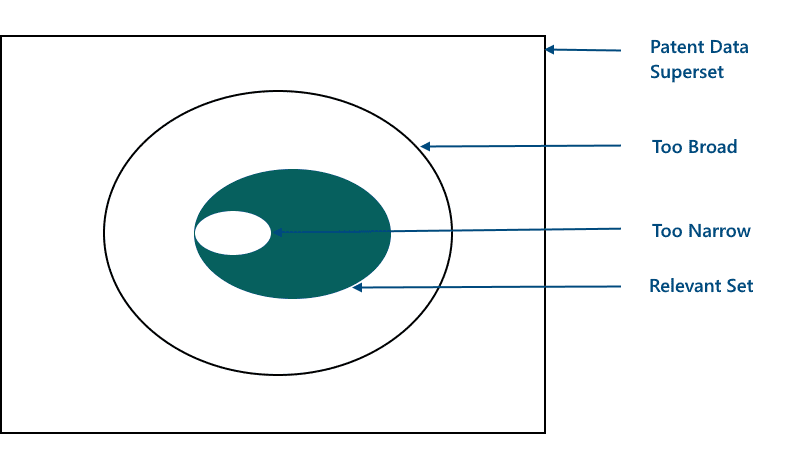
If the search does not cover spelling variations, keyword synonyms, parallel search strategies (will discuss in later articles), or if too specific terms are used in the searches, then the search is too narrow and the searcher may miss out on relevant documents. It is important to understand that even a single relevant document missed, might be harmful to the focus of the project.
On the other hand, if searchers use too generic terms to make the search broad, a large number of non-relevant results will be retrieved and will be time consuming to analyze.
Another important skill of an expert searcher is playing with parallel strategies involving search fields and operators (will discuss in later articles) which defines the quality of the search. A series of searches and parallel search strategies is usually referred to as search optimization.
Example:
For a ‘mobile phone’, a good searcher will search for terms ‘mobile phone’, ‘cell phone’, ‘cellular phone’, ‘hand phone’, ‘portable telecommunication device’, ‘portable electronic device’, ‘handheld communication device’, ‘handheld electronic device’, and their plurals such as ‘mobile phones’, etc. in a combination of Patent Title, Abstract, Claims, and Full Specification. All of these terms/keywords form an exhaustive type of search query, which means we have used all possible variations for ‘mobile phone’.
For the same idea a poor searcher with too broad a search, will search only ‘electronic device’ in title, abstract or ‘mobile phone’ in full text, which will lead to a non-analyzable number of results and cannot be possibly analyzed to find the relevant patents.
A bad searcher with a narrow approach will search only ‘mobile phone’ in title and abstract to miss out on the other keywords based patents.
Extensive Searches and Patent Databases
Apart with being exhaustive, a good search also has to be extensive, which means using maximum data coverage.
Thus, the choice of the correct database and understanding the working of such a database is extremely significant to uncover relevant results for a project.
Patent searching databases form an integral part of patent search strategies. A patent database is meant to be a single platform search interface for an aggregated cluster of patent documents from different resources. A good patent database provides and is ranked on multiple features such as multijurisdictional access, search facilities, multilingual searches, and translations, a few examples of which are shown below
Searching across multiple geographical jurisdictions at a time via in a single search
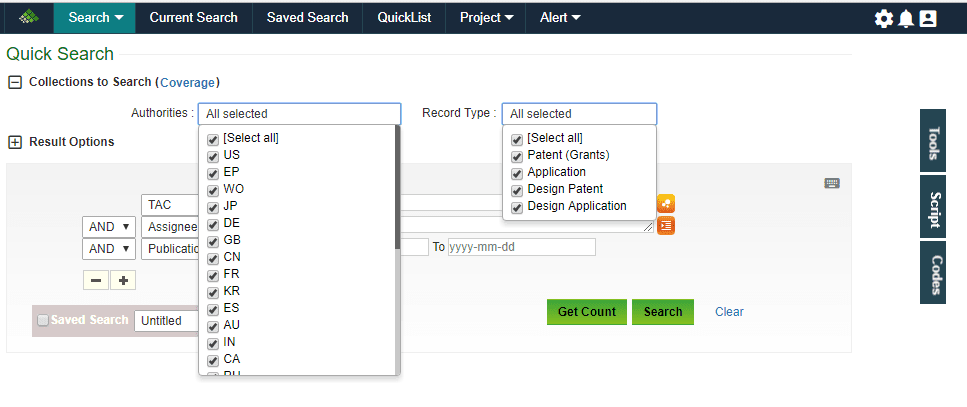
Different types of search field options may be provided by a database, allowing a searcher to use different interfaces to carry out a search viz. Quick search, Simple search, Fields based search, Number search, etc.
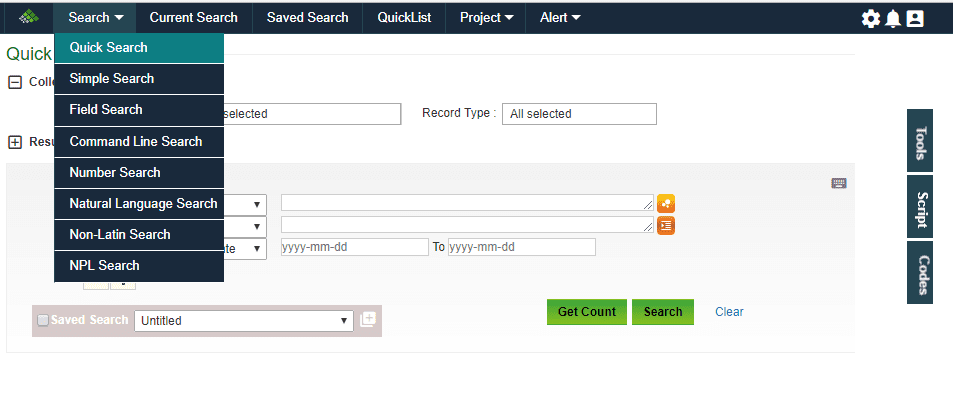
Broad heads of searches: keywords, image, classification, structure AND sequence
Patent searches can be categorized under broad classifications and heads such as keyword searches, classification searches, structure searches, sequence searches, and image searches.
Keyword Searches: Use of concepts and terms related to the invention or domain of interest by inserting text characters as search terms. Using alternative terms like synonyms, spelling variations, acronyms also helps in finding records related to similar technology area. This is the most widely used and basic search category for patent searching
Classification Searches: Specific codes have been adopted to categorize different technical areas which are used to categorize patent documents. Patent documents are categorized as per the subject matter of claims. Classification search helps in identifying patents to a specific technical area. This search is particularly helpful to uncover patents not having specific keywords used in searches but belonging to the specific technology relating to the missing keywords. Typical classification systems are International Patent Classification (IPC), United States Patent Classification (USPC), Cooperative Patent Classification (CPC), Japanese FI and F term classification. However, it is to be noted that classification search cannot be relied on as a standalone search strategy since a number of patents may be incompletely classified or misclassified with respect to the search being conducted by a searcher for a particular technical area.
Structure Searches: Chemical structures can be searched on certain databases where atom to atom and fragment to fragment indexing of chemical structures is done. The searches are typically useful since keyword searches are often inadequate to retrieve relevant structures or broader versions of the structure of interest to the searcher.
Below is an image of a structure search interface
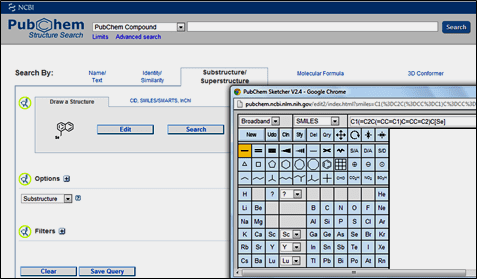
Sequence Searches: On the same lines to chemical structures, sequence searches are used for nucleotide and protein sequences.
Below is an image of a sequence search interface
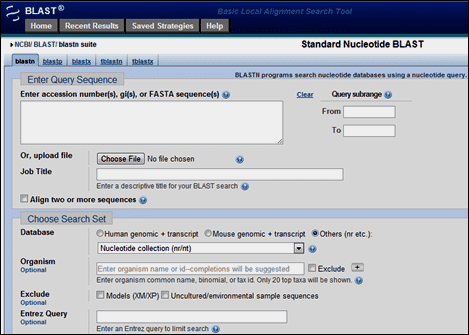
Image Searches: Generally not provided by major databases, certain search engines such as Google allow image to image mapping search algorithm which is helpful in identifying similar images. These searches can be typically useful for mechanical and electromechanical inventions.

Types of Patent Searching Projects
The typical projects for which patent searches are carried out may be categorized as follows:
(Also known as Prior Art Search or Novelty Search)
(Also known as Opposition Study or Patent Validity Study)
(Also known as Infringement Analysis or Clearance Search)
(Also known as State-of-Art Study or Competitive Technical Intelligence Report or White Space Analysis or Technical Gap Analysis)
EQUIVALENT SEARCH
(Also known as Family Member Search)
LEGAL STATUS SEARCH
(Also known as Patent Status Search)
PATENT TERM EXTENSION SEARCH
(Also known as Orange Book Search or SPC search)
To sum-up, we can observe through above examples that patent searches provide strategic inputs on multiple fronts and enable different decisions in an organization. It should be noted however, that other than the above mentioned examples, many other case by case situational decisions can be empowered by a relevant patent search and this extends to not just companies but academic institutions, students, Government agencies and individual inventors.
This article contains excerpts taken from E-Book on Practical Patent Searching, second edition. To continue reading please download the full copy here: https://patseer.com/book-on-patent-searching/.
To get free trial of PatSeer fill up the enquiry form below.




